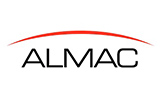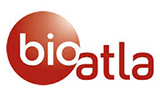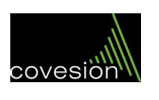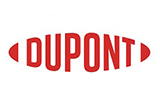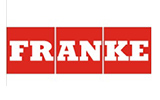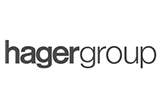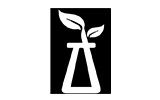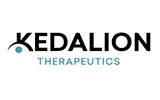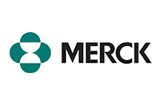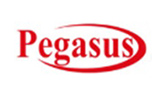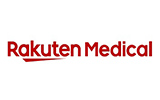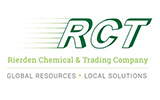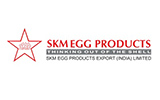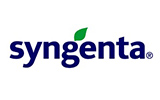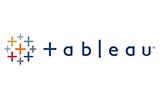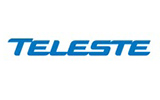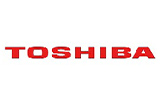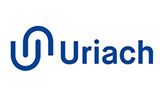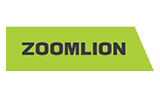CHAPTER 1:INTRODUCTION
1.1.Report description
1.2.Key benefits for stakeholders
1.3.Key market segments
1.4.Research methodology
1.4.1.Secondary research
1.4.2.Primary research
1.5.Analyst tools and models
CHAPTER 2:EXECUTIVE SUMMARY
2.1.Key findings of the study
2.2.CXO perspective
CHAPTER 3:MARKET OVERVIEW
3.1.Market definition and scope
3.2.Key findings
3.2.1.Top investment pockets
3.3.Porter's five forces analysis
3.4.Market dynamics
3.4.1.Drivers
3.4.1.1.Emergence of new infectious microorganism
3.4.1.2.Increase in utilization of antimicrobial additives in plastic products
3.4.2.Restraint
3.4.2.1.Reduced level of antimicrobial action in surface coatings
3.4.3.Opportunities
3.4.3.1.Development of natural antimicrobial additives in food packaging industry may open up profitable opportunities
3.5.Pricing analysis
3.6.Value chain analysis
3.7.Impact of key regulations on the global antimicrobial additives market
3.8.Impact of COVID-19 on the global antimicrobial additives market
CHAPTER 4:ANTIMICROBIAL ADDITIVES MARKET, BY PRODUCT TYPE
4.1.Overview
4.1.1.Market size and forecast
4.2.Inorganic antimicrobial additives
4.2.1.Key market trends, growth factors, and opportunities
4.2.2.Market size and forecast, by region
4.2.2.1.Inorganic Antimicrobial Additives, by type
4.2.2.1.1.Silver
4.2.2.1.2.Zinc
4.2.2.1.3.Copper
4.2.2.2.Market Size and Forecast by Inorganic Antimicrobial Additives type
4.2.3.Comparative Share Analysis By Country
4.3.Organic antimicrobial additives
4.3.1.Key market trends, growth factors, and opportunities
4.3.2.Market size and forecast, by region
4.3.2.1.Organic Antimicrobial Additives, by type
4.3.2.1.1.4,5-Dichloro-2-(N-Octyl)-4-Isothiazolin-3-One
4.3.2.1.2.Oxybisphenox Arsin
4.3.2.1.3.Triclosan
4.3.2.1.4.Others
4.3.2.2.Market Size and Forecast by Organic Antimicrobial Additives type
4.3.3.Comparative Share Analysis By Country
CHAPTER 5:ANTIMICROBIAL ADDITIVES MARKET, BY APPLICATION
5.1.Overview
5.1.1.Market size and forecast
5.2.Plastic
5.2.1.Key market trends, growth factors, and opportunities
5.2.2.Market size and forecast, by region
5.2.3.Comparative Share Analysis By Country
5.3.Paints & coatings
5.3.1.Key market trends, growth factors, and opportunities
5.3.2.Market size and forecast, by region
5.3.3.Comparative Share Analysis By Country
5.4.Pulp & paper
5.4.1.Key market trends, growth factors, and opportunities
5.4.2.Market size and forecast, by region
5.4.3.Comparative Share Analysis By Country
5.5.Others
5.5.1.Key market trends, growth factors, and opportunities
5.5.2.Market size and forecast, by region
5.5.3.Comparative Share Analysis By Country
CHAPTER 6:ANTIMICROBIAL ADDITIVES, BY END-USE
6.1.Overview
6.1.1.Market size and forecast, by End-use
6.2.Construction
6.2.1.Key market trends, growth factors, and opportunities
6.2.2.Market size and forecast, by region
6.2.3.Market analysis, by country
6.3.Automotive
6.3.1.Key market trends, growth factors, and opportunities
6.3.2.Market size and forecast, by region
6.3.3.Market analysis, by country
6.4.Healthcare
6.4.1.Key market trends, growth factors, and opportunities
6.4.2.Market size and forecast, by region
6.4.3.Market analysis, by country
6.5.Food and beverage
6.5.1.Key market trends, growth factors, and opportunities
6.5.2.Market size and forecast, by region
6.5.3.Market analysis, by country
6.6.Others
6.6.1.Key market trends, growth factors, and opportunities
6.6.2.Market size and forecast, by region
6.6.3.Market analysis, by country
CHAPTER 7:GLOBAL ANTIMICROBIAL ADDITIVES MARKET, BY REGION
7.1.Overview
7.1.1.Market size and forecast, by Region
7.2.North America
7.2.1.Key market trends, growth factors, and opportunities
7.2.2.Market size and forecast, by Product type
7.2.3.Market size and forecast, by Application
7.2.4.Market size and forecast, by End-Use
7.2.5.Market analysis, by country
7.2.6.U.S.
7.2.6.1.Market size and forecast, by Product type
7.2.6.2.Market size and forecast, by Application
7.2.6.3.Market size and forecast, by End-use
7.2.7.Canada
7.2.7.1.Market size and forecast, by Product type
7.2.7.2.Market size and forecast, by Application
7.2.7.3.Market size and forecast, by End-use
7.2.8.Mexico
7.2.8.1.Market size and forecast, by Product type
7.2.8.2.Market size and forecast, by Application
7.2.8.3.Market size and forecast, by End-use
7.3.Europe
7.3.1.Key market trends, growth factors, and opportunities
7.3.2.Market size and forecast, by Product type
7.3.3.Market size and forecast, by Application
7.3.4.Market size and forecast, by End-use
7.3.5.Market analysis, by country
7.3.6.Germany
7.3.6.1.Market size and forecast, by Product type
7.3.6.2.Market size and forecast, by Application
7.3.6.3.Market size and forecast, by End-use
7.3.7.UK
7.3.7.1.Market size and forecast, by Product type
7.3.7.2.Market size and forecast, by Application
7.3.7.3.Market size and forecast, by End-use
7.3.8.France
7.3.8.1.Market size and forecast, by Product type
7.3.8.2.Market size and forecast, by Application
7.3.8.3.Market size and forecast, by End-use
7.3.9.Italy
7.3.9.1.Market size and forecast, by Product type
7.3.9.2.Market size and forecast, by Application
7.3.9.3.Market size and forecast, by End-use
7.3.10.Spain
7.3.10.1.Market size and forecast, by Product type
7.3.10.2.Market size and forecast, by Application
7.3.10.3.Market size and forecast, by End-use
7.3.11.Rest of Europe
7.3.11.1.Market size and forecast, by Product type
7.3.11.2.Market size and forecast, by Application
7.3.11.3.Market size and forecast, by End-use
7.4.Asia-Pacific
7.4.1.Key market trends, growth factors, and opportunities
7.4.2.Market size and forecast, by Product type
7.4.3.Market size and forecast, by Application
7.4.4.Market size and forecast, by End-use
7.4.5.Market analysis, by country
7.4.6.China
7.4.6.1.Market size and forecast, by Product type
7.4.6.2.Market size and forecast, by Application
7.4.6.3.Market size and forecast, by End-use
7.4.7.India
7.4.7.1.Market size and forecast, by Product type
7.4.7.2.Market size and forecast, by Application
7.4.7.3.Market size and forecast, by End-use
7.4.8.South Korea
7.4.8.1.Market size and forecast, by Product type
7.4.8.2.Market size and forecast, by Application
7.4.8.3.Market size and forecast, by End-use
7.4.9.Japan
7.4.9.1.Market size and forecast, by Product type
7.4.9.2.Market size and forecast, by Application
7.4.9.3.Market size and forecast, by End-use
7.4.10.Australia
7.4.10.1.Market size and forecast, by Product type
7.4.10.2.Market size and forecast, by Application
7.4.10.3.Market size and forecast, by End-use
7.4.11.Rest of Asia-Pacific
7.4.11.1.Market size and forecast, by Product type
7.4.11.2.Market size and forecast, by Application
7.4.11.3.Market size and forecast, by End-use
7.5.LAMEA
7.5.1.Key market trends, growth factors, and opportunities
7.5.2.Market size and forecast, by Product type
7.5.3.Market size and forecast, by Application
7.5.4.Market size and forecast, by End-use
7.5.5.Market analysis, by country
7.5.6.Brazil
7.5.6.1.Market size and forecast, by Product type
7.5.6.2.Market size and forecast, by Application
7.5.6.3.Market size and forecast, by End-use
7.5.7.South Africa
7.5.7.1.Market size and forecast, by Product type
7.5.7.2.Market size and forecast, by Application
7.5.7.3.Market size and forecast, by End-use
7.5.8.Saudi Arabia
7.5.8.1.Market size and forecast, by Product type
7.5.8.2.Market size and forecast, by Application
7.5.8.3.Market size and forecast, by End-use
7.5.9.Rest of LAMEA
7.5.9.1.Market size and forecast, by Product type
7.5.9.2.Market size and forecast, by Application
7.5.9.3.Market size and forecast, by End-use
CHAPTER 8:COMPETITIVE LANDSCAPE
8.1.Introduction
8.1.1.Market player positioning, 2019
8.2.Top winning strategies
8.2.1.Top winning strategies, by year
8.2.2.Top winning strategies, by development
8.2.3.Top winning strategies, by company
8.3.Product mapping of top 10 player
8.4.Competitive dashboard
8.5.Competitive heatmap
8.6.Key developments
8.6.1.New product launches
8.6.2.Other developments
CHAPTER 9:COMPANY PROFILES
9.1.BASF SE
9.1.1.Company overview
9.1.2.Company snapshot
9.1.3.Operating business segments
9.1.4.Product portfolio
9.1.5.Business performance
9.1.6.Key strategic moves and developments
9.2.BIOCOTE LIMITED
9.2.1.Company overview
9.2.2.Company snapshot
9.2.3.Product portfolio
9.3.CLARIANT AG
9.3.1.Company overview
9.3.2.Company snapshot
9.3.3.Operating business segments
9.3.4.Product portfolio
9.3.5.Business performance
9.4.KINGPLASTIC CORPORATION
9.4.1.Company overview
9.4.2.Company snapshot
9.4.3.Product portfolio
9.5.MICROBAN INTERNATIONAL LIMITED
9.5.1.Company overview
9.5.2.Company snapshot
9.5.3.Operating business segments
9.5.4.Product portfolio
9.6.MILLIKEN CHEMICAL
9.6.1.Company overview
9.6.2.Company snapshot
9.6.3.Operating business segments
9.6.4.Product portfolio
9.6.5.Key strategic moves and development
9.7.SANITIZED AG
9.7.1.Company overview
9.7.2.Company snapshot
9.7.3.Product portfolio
9.7.4.Key strategic moves and development
9.8.LYONDELL BASELL
9.8.1.Company overview
9.8.2.Company snapshot
9.8.3.Operating business segments
9.8.4.Product portfolio
9.8.5.Business performance
9.8.6.Key strategic moves and development
9.9.POLYONE CORPORATION (AVIENT CORPORATION)
9.9.1.Company overview
9.9.2.Company snapshot
9.9.3.Operating business segments
9.9.4.Product portfolio
9.9.5.Business performance
9.9.6.Key strategic moves and developments
9.10.DOW INC.
9.10.1.Company overview
9.10.2.Company snapshot
9.10.3.Operating business segments
9.10.4.Product portfolio
9.10.5.Business performance


